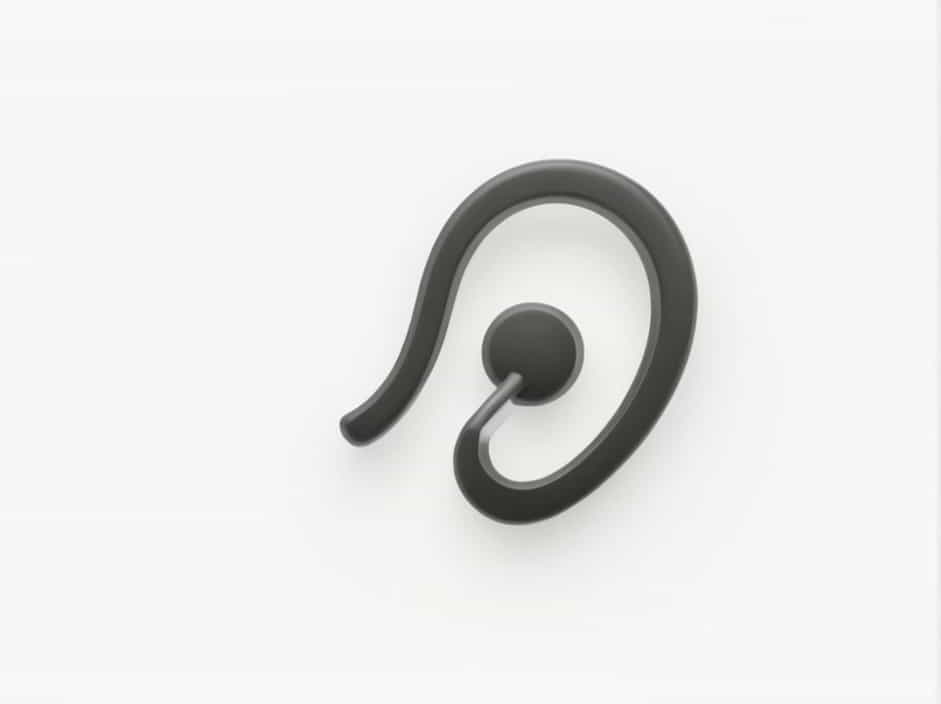The stirrup is one of the smallest bones in the human body and plays a crucial role in hearing. Also known as the stapes, it is part of the middle ear ossicles, which include the malleus (hammer), incus (anvil), and stapes (stirrup). These tiny bones work together to transmit sound vibrations from the eardrum to the inner ear, allowing us to hear.
Understanding the function of the stirrup bone can help us appreciate how sound waves are processed and why maintaining ear health is essential for proper hearing.
Anatomy of the Stirrup (Stapes) Bone
1. Location and Structure
The stirrup bone (stapes) is located in the middle ear, where it connects to the incus on one side and the oval window of the inner ear on the other. It has a stirrup-like shape, which is how it got its name.
The stapes consists of three main parts:
- Head – Connects to the incus via a small joint.
- Crura (arches) – Two bony limbs that give it a stirrup-like appearance.
- Base (footplate) – Sits against the oval window, transferring sound vibrations into the inner ear.
2. How It Works with Other Ear Bones
The malleus, incus, and stapes work together to amplify and transmit sound waves. Here’s how the process works:
- Sound waves enter the ear canal and vibrate the eardrum (tympanic membrane).
- The malleus (hammer), attached to the eardrum, picks up the vibrations.
- Vibrations move to the incus (anvil), which transfers them to the stapes (stirrup).
- The stapes pushes against the oval window, sending vibrations into the cochlea (inner ear).
This process allows us to hear different frequencies and detect sounds in our environment.
Main Functions of the Stirrup Bone
1. Amplification of Sound Vibrations
One of the most important functions of the stirrup bone is amplifying sound vibrations before they reach the inner ear. Since sound waves weaken as they travel, the ossicles increase their intensity to ensure they are strong enough to stimulate the inner ear.
Without this amplification process, we would struggle to hear soft or distant sounds.
2. Transmission of Sound to the Inner Ear
The stapes transmits vibrations from the middle ear to the cochlea, a spiral-shaped structure in the inner ear. The cochlea converts these vibrations into electrical signals, which are sent to the brain via the auditory nerve.
This function is essential for speech recognition, music appreciation, and detecting environmental sounds.
3. Protecting the Inner Ear from Loud Noises
Although the stirrup bone amplifies sound, it also plays a role in protecting the ear from excessively loud noises. When exposed to loud sounds, a tiny muscle called the stapedius muscle contracts, reducing the movement of the stapes.
This process, known as the acoustic reflex, helps prevent damage to the inner ear from sudden loud noises like explosions or machinery.
What Happens When the Stirrup Bone Malfunctions?
1. Otosclerosis (Stiffening of the Stapes)
One of the most common conditions affecting the stirrup bone is otosclerosis. This occurs when the stapes becomes stiff and less mobile, preventing it from transmitting sound vibrations properly. Symptoms of otosclerosis include:
- Gradual hearing loss
- Difficulty hearing low-pitched sounds
- Tinnitus (ringing in the ears)
- Balance issues in some cases
Treatment options for otosclerosis include:
- Hearing aids to amplify sound
- Stapedectomy surgery, where the stiffened stapes is replaced with a prosthetic bone
2. Middle Ear Infections
Infections in the middle ear (otitis media) can cause fluid buildup, which affects the movement of the stapes. This can lead to temporary hearing loss and discomfort.
Common symptoms include:
- Ear pain or pressure
- Muffled hearing
- Fluid drainage from the ear
Most middle ear infections resolve on their own, but in severe cases, antibiotics or drainage tubes may be needed.
3. Trauma or Injury
Direct injury to the ear, such as a blow to the head or loud noise exposure, can damage the stapes or its surrounding structures. This can result in:
- Conductive hearing loss (caused by damage to the middle ear bones)
- Inner ear damage, leading to permanent hearing impairment
- Balance problems, if the injury affects the inner ear structures
Protecting the ears from loud noises, infections, and physical trauma can help maintain stapes function and overall ear health.
How to Keep Your Ears Healthy
1. Protect Your Ears from Loud Noises
To prevent damage to the stapes and inner ear, follow these tips:
- Use earplugs or noise-canceling headphones in loud environments.
- Keep the volume at a moderate level when using headphones.
- Take breaks from loud noise exposure to give your ears time to recover.
2. Prevent and Treat Ear Infections
Ear infections can affect middle ear function, including the stapes. To reduce the risk:
- Keep ears dry to prevent bacterial growth.
- Avoid inserting objects into the ear canal, as this can push bacteria deeper.
- Treat colds and allergies promptly to prevent fluid buildup.
3. Regular Hearing Check-Ups
Hearing problems can develop gradually, so regular check-ups with an audiologist or ENT specialist can help detect early signs of issues like otosclerosis or nerve damage.
Early detection means better treatment options and a lower risk of permanent hearing loss.
The stirrup bone (stapes) is an essential part of the hearing process. It amplifies and transmits sound vibrations from the middle ear to the inner ear, allowing us to hear clearly. It also helps protect the inner ear from loud noises through the acoustic reflex.
Issues such as otosclerosis, ear infections, and trauma can affect the function of the stapes, leading to hearing loss or balance problems. By taking steps to protect your ears from loud noise, infections, and injuries, you can maintain good hearing health for life.
